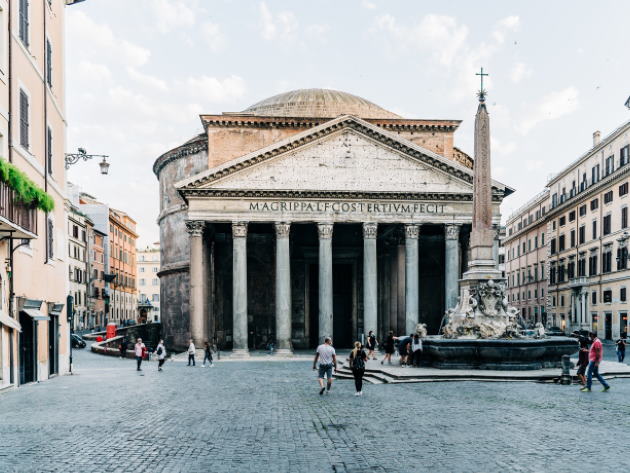
The charm of past centuries, the beauty of today
When speaking of luxury, richness, splendor and magnificence are not the only keywords. Elegance and style do play their role, especially if they are combined with the everlasting charm of the olden days. In other words, luxury is made first of all of dreams, imagination and history, with their evocative vibe. Since Rome is an Eternal City, it shouldn’t come as a surprise that also hotels have an illustrious past to tell. From the first Renaissance inns to the Parisian hotels of the late 19th and early 20th centuries, history passed through their rooms, where writers, artists, scientists, kings, princes and ambassadors have stayed. To preserve this heritage of stories and give the right value to classy hospitality, Federalberghi Roma has brought together some of the structures born at least before 1950 in the Comitato Alberghi Storici, with over 40 members, of which about half are four or five star hotels.
Ancient origins, very special guests
The oldest hotel in Rome is the Albergo del Sole, once Locanda del Montone (the Ram Inn): an exclusive and intimate hotel – with an internal garden full of flowers and palm trees and a hall with 18th-century frescoes – holding a prime location, just in front of the Pantheon. Two commemorative plaques on its façade remember poet Ludovico Ariosto, who stayed here in 1513, and composer Pietro Mascagni, who celebrated the premiere of Cavalleria Rusticana. The hotel was however first mentioned in 1467, when it welcomed the soldiers of Emperor Frederick III of Habsburg, and its history has been handed down by special guests, including the magician and alchemist Count of Cagliostro and, in more recent years, Jean-Paul Sartre and Simone de Beauvoir. A few steps away, in the square adorned by Gian Lorenzo Bernini’s “Minerva’s Chick”, a palace built in 1620 as the residence of the Portuguese Fonseca noble family houses the first Italian grand hotel, the Grand Hotel de la Minerve. In 1835, it was converted into a luxury hotel by a French family, the Sauve, who arrived in the city following Napoleon. Its suites are named after some of the many prominent personalities who chose it as their favorite venue, and they are extraordinary guests: Stendhal, Herman Melville, George Sand, Vittorio Alfieri. The refined decorative apparatus created for its halls by sculptor Rinaldo Rinaldi, Antonio Canova’s first apprentice, contributes to enhance the noble and elegant lines of the building.
Lavish venues in the Tridente area
A monumental architecture, liberty decorations and panoramic verdant terraces: in the Tridente area, on Via del Corso, the Grand Hotel Plaza was born as an inn in the last years of Papal Rome but quickly became a meeting place for nobles, artists, politicians and royals visiting Rome. It is said that princes Umberto and Margherita of Savoy attended the Roman carnival from its windows but the list of its illustrious guests is long: Pietro Mascagni, the Empress Carlota of Mexico , directors Luchino Visconti and Federico Fellini. Entering Rome from Porta del Popolo, however, the first city hotel was the Hotel de Russie, “a paradise on earth” according to French poet Jean Cocteau, who stayed here in 1917 together with Pablo Picasso when preparing to stage the first ever Cubist ballet. Converted into a hotel in the last quarter of the 19th century, it entertained so many crowned heads (the Romanovs, Prince Jérôme Napoléon, King Gustav of Sweden, Ferdinand and Boris of Bulgaria...) that it was nicknamed “Hotel of the Kings”. Giuseppe Valadier designed its splendid secret garden, visible only from the back of the hotel and divided into various terraces that rise towards the Pincio. On the opposite side of Piazza del Popolo, on via della Penna, the Hotel Locarno is a refined Art Nouveau jewel, guardian of an era with an indissoluble bond with the world of art and culture. Inaugurated in 1925 as a refined 5-star hotel by the original Swiss owners who named it after their hometown, starting from the 1960s it became the meeting place of a lively community of artists, actors and intellectuals, with memorable guests such as Jean-Michel Basquiat and Jorge Luis Borges.
Luxury and breathtaking views
At the top of the Spanish Steps, in a spectacular location in the heart of Rome, the Hotel Hassler Villa Medici is named after its first owner, Swiss hotelier Albert Hassler who founded it in 1893, but since the 1920s it belongs to the Wirth family. A meeting place for the Italian and foreign political, economic and cultural elites, the hotel has been frequented by hundreds of excellent visitors: the Kennedy family, Prince Rainier of Monaco and Grace Kelly, Charlie Chaplin and Gabriel Garcia Marquez are just some of the names that appear in his Golden Book. Equally enviable is the view from the terrace of the Sina Bernini Bristol hotel, chosen by Paolo Sorrentino for the film “The great beauty”. Inaugurated in 1874 under the name of Hotel Bristol in honor of the fourth Earl of Bristol – renowned for his many travels across Europe and the luxurious lifestyle – the hotel was completely rebuilt in the early 1940s adding to its name the one of Gian Lorenzo Bernini, the author of the Triton Fountain dominating the nearby Piazza Barberini. Throughout its long history, the hotel has been the reference point for famous personalities such as the Emperor of Brazil, the Princes of Wales, the Rockefellers and the Vanderbildts who used to spend the cold winter months in Rome.
The Dolce Vita on Via Veneto
One of the most famous streets of Rome: when it was built in the 1880s, Via Veneto was the Belle Époque street, with luxury hotels and Parisian-style cafes, then became a destination for movie stars and artists in the 1950s and 1960s, acquiring international fame thanks to Federico Fellini’s La Dolce Vita. The first hotel that was built in the street, in 1889, was the Majestic, designed by Gaetano Koch – the architect of the nearby American Embassy and of the Bank of Italy – who gave the building its unique “piano-like” layout. Its modernity, architectural design, tapestries, precious furniture and frescoes by Domenico Bruschi in the ballroom have made it famous since the 1920s: royals, princes & princesses and show biz stars used to choose it for their stay in Rome. Built in 1900 originally to host ambassadors staying in Rome, the nearby Palace Hotel was designed in Neo-Renaissance style by architect Carlo Busiri Vici. After the Second World War, it served as the American Embassy Library; it was reopened in the 1990s with the name of Ambasciatori Palace, keeping intact the beauty of the rooms and the original decorations, such as the wrought iron balustrade of the Liberty staircase. Dating back to 1927 is the impressive building of the Grand Hotel Palace, once known as the Albergo degli Ambasciatori. An example of Roman modernist architecture, the hotel was designed by Marcello Piacentini and marks the transition from Art Nouveau to Art Deco style. Crossing its elegant wrought iron and bronze gate, visitors enters into a timeless atmosphere, adorned with stuccos, crystal chandeliers, marble floors and the stunning frescoes painted by the Venetian Guido Cadorin: portrays include the owners of the hotel, Marcello Piacentini with his family and an unexpected Gio Ponti who looks out from a column with an ironic smile.
Rione IX - Pigna
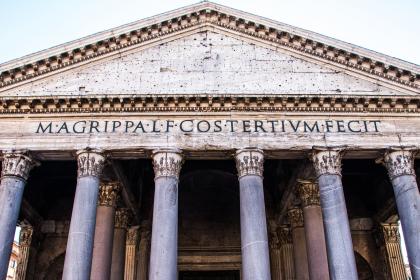
The Basilica of Santa Maria sopra Minerva
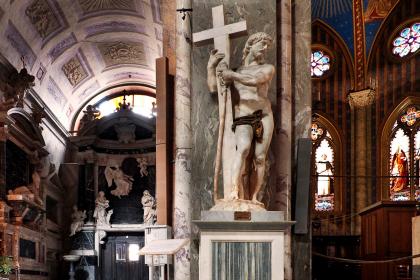
 Condividi
Condividi
Bernini's locations
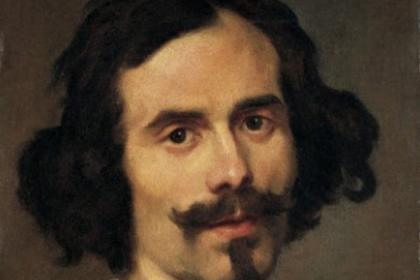
I maestri dell’arte - Itinerari romani sulle tracce dei grandi artisti
 Condividi
Condividi
Piazza del Popolo

 Condividi
Condividi
The Pincio terrace and promenade
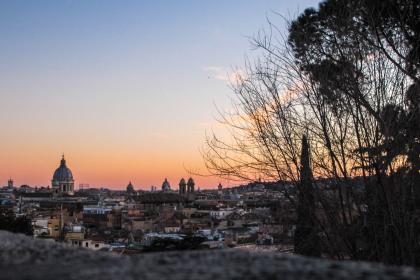
 Condividi
Condividi
The Spanish Steps
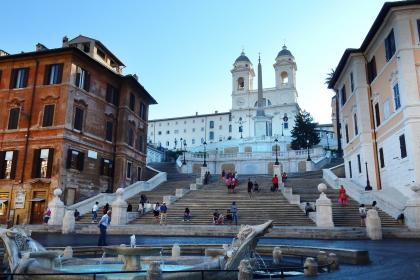
 Condividi
Condividi
The Triton Fountain
 Condividi
Condividi
Piazza Barberini
 Condividi
Condividi
Via Vittorio Veneto
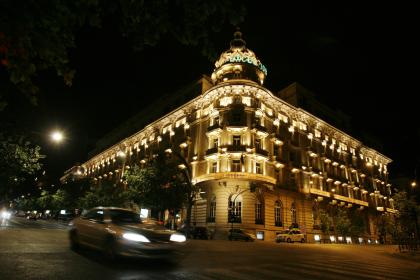
 Condividi
Condividi
The Dolce Vita
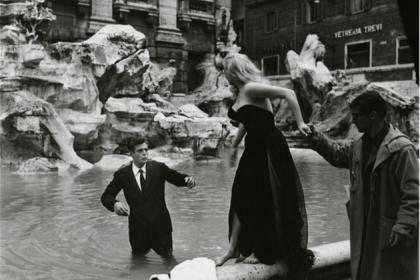
Luxury and glamour in Rome during the economic boom











































